The Ultimate Guide to Choosing a VR Headset
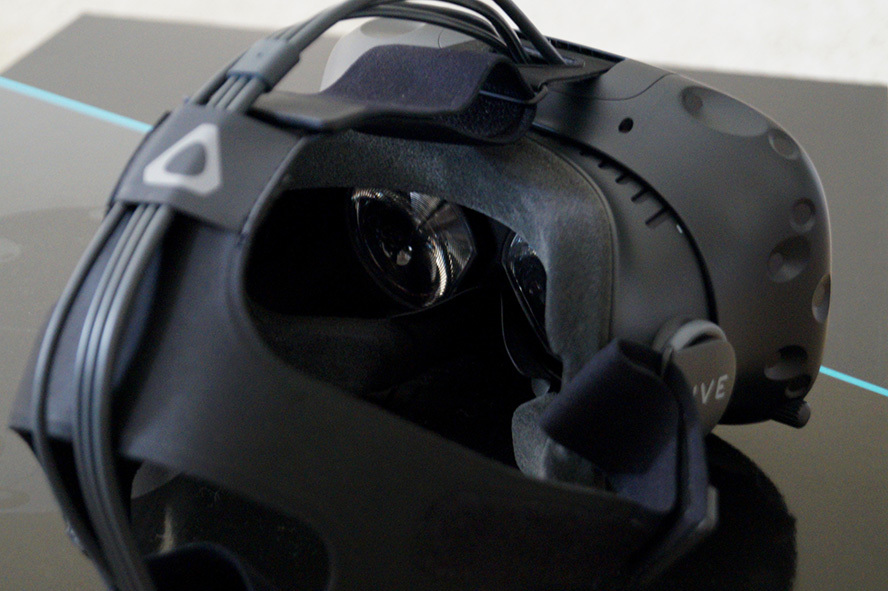
The age of virtual reality is here and numerous companies are offering their own VR headsets and distribution platforms. But which one is right for you? Should you stick with the well-known Oculus Rift, or do you take a chance on the HTC Vive? Do you head to consoles with the PlayStation VR, or build your own power headset using Razer's OSVR platform? In this article, we take a look at six current and upcoming headsets and break them down to see which one is right for you.
The Oculus Rift
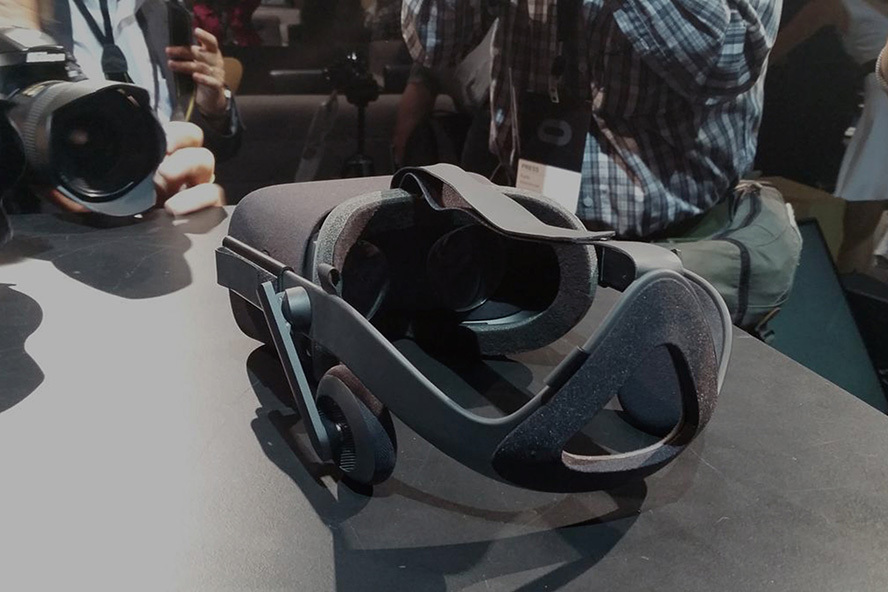
The Oculus Rift sparked the modern VR craze. It's the headset with the most name recognition, and with that recognition comes a lot of software support. It's also been around the longest, meaning its dev team has had a lot of time to work out the kinks in size, weight, form factor, and general comfort. The consumer version is only .8 pounds, making it the lightest headset on this list. It has a double HD display with each eye running at 1080x1200 pixels at 90hz, along with a gyroscope, accelerometer, IR sensor for head tracking, built in headphones, and a microphone. The Oculus is also the easiest headset to set up on a PC. All of its apps come to you via a simple store, which guarantees compatibility as long as your rig is Rift ready. It even rates the apps in terms of motion sickness intensity.
There are some flaws to note. Name recognition comes at a price, and that price is $599 USD, making it the second most expensive headset on the market. The Rift hugs glasses uncomfortably close to the face, and there have already been reports of bent frames as a result of consumer Rift usage. The Rift motion controller is unavailable at time of writing, and Oculus has not yet announced a price or a release date for them. Finally, the Rift requires a pretty powerful PC to run. You'll need at least a GeForce GTX 970 or comparable graphics card to get the Rift working. In laymen's terms, my gaming desktop and gaming laptop, which were built only a two years ago, BOTH required graphics cards upgrades to get the Rift working.
The Rift is the "safe choice" for the mid-range user. It appeals to casual and power users alike, with customizability traded for power and ease of use. If you don't know what sort of VR experience you are looking for, then it's hard to go wrong with the Rift's large library. I personally recommend checking out EVE: Valkyrie, which may be one of the best space shooters our generation will ever see. I'd also recommend Chronos, an RPG that takes place over the entire lifetime of one adventurer.
The PlayStation VR
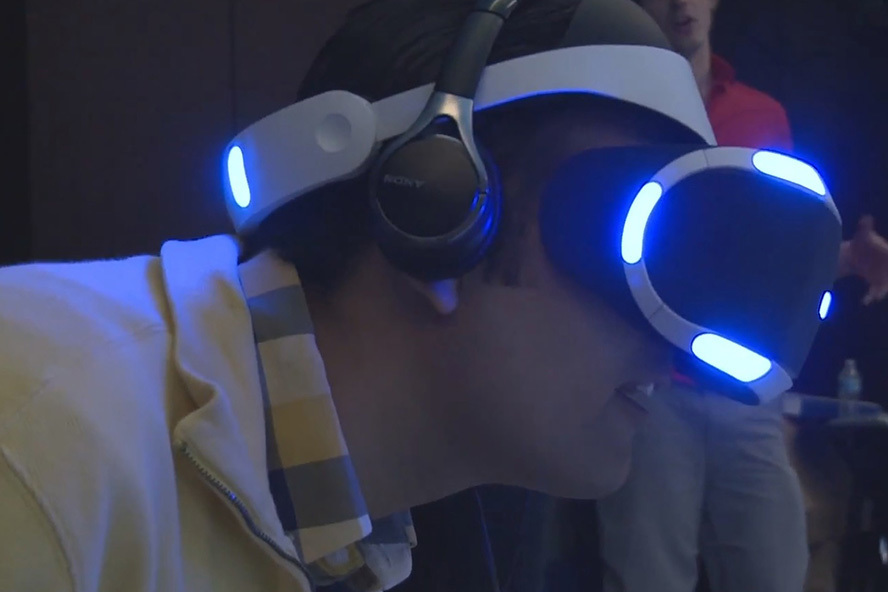
The PlayStation VR's biggest strength is right in its name: the PlayStation. It hooks up to a console, unlike all these other headsets. That means no upgrading your computer, no checking to see if you can run VR games, no tinkering with software to get it to load in VR mode. Just plug and play and you are good to go. While its resolution is less impressive than the Oculus's at 960 x 1080 in each eye, it refreshes at 120hz, which is the highest rate on this list. The PlayStation VR utilizes the Move controllers and camera , which have been available since the PlayStation 3 era and can be purchased at a bargain price these days. It's also being sold at a lower price-point, at $399 for just the headset and $499 for the headset, two Move controllers, a Move camera, and download codes for PlayStation VR Worlds and Playroom.
That being said, the PlayStation VR won't launch until October 2016, well after even the next wave of backordered Rift shipments go out. While considered to be one of the more comfortable VR headsets out there, users have complained about a gap between the bottom of the headset and the face, which lets in outside light.
The PlayStation VR also has some well-known names coming to its software library. I suggest taking a look at REZ Infinite, a VR take on a classic synesthetic experience. Driveclub VR and Until Dawn: Rush of Blood are two other VR interpretations of already well-received PlayStation titles. Sony has also said it is looking into developing asymmetrical party style games, where one person plays in VR while everyone else plays on the TV screen.
The PlayStation VR is built for the more casual user who doesn't want to worry about specs, numbers, or computer parts. If you spend more time gaming on your console than your PC, this is the perfect headset for you. Note, however, that until some hacker releases drivers to let this thing work on a PC, you'll be pigeonholed into Sony's software environment, which is a double-edged sword. While you'll get big name titles from Sony's partners, you also won't have access to the wealth of indie games and VR conversions that exist in the PC software world.
The HTC Vive
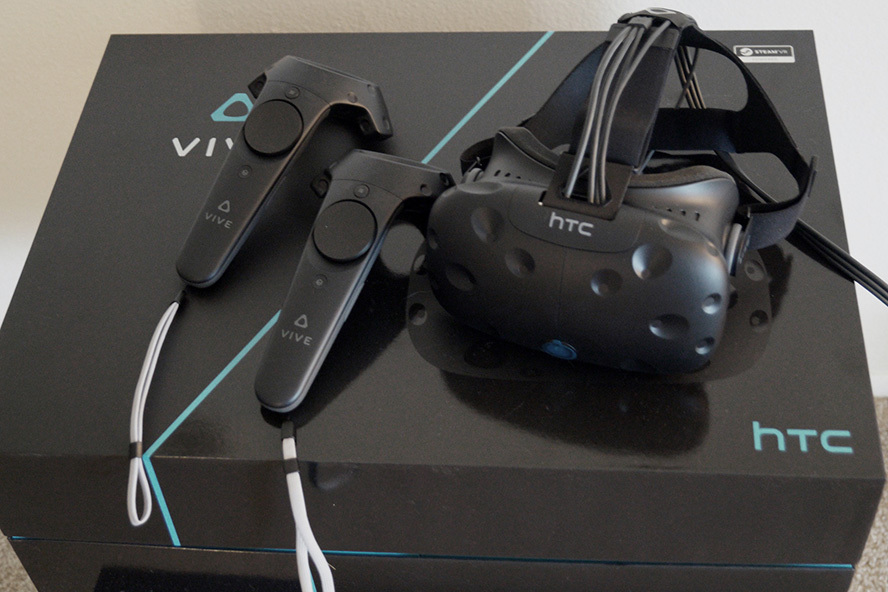
At first glance, the HTC Vive seems similar to the Rift. It has the same resolution and the same refresh rate. It has a gyroscope, accelerometer, and head tracker. It doesn't come with the Rift's built-in soft headphones, but it still has integrated audio.
So what's different? First of all, the aspect ratio of the HTC Vive is 9:5 as opposed to 16:9, which means your field of view is taller, producing a more encompassing image. The Vive is heavier and bulkier than the Rift, but it fits comfortably over glasses, though you'll have to do a lot of finagling with adjustable straps and swappable foam inserts in order to get it to fit right. Unlike the Rift, the Vive will launch with fully working motion controllers, which come bundled along with three games, Job Simulator, Tilt Brush, and Fantastic Contraption. You can even hook up the Vive to your smartphone in order to get notifications while in virtual reality. Perhaps the coolest thing about the HTC Vive is its two infrared cameras which map your position in the room. This allows you to get up out of your seat and explore a 3D environment, unlike most other VR experiences which are designed to keep you in one place swiveling your head.
The Vive is being marketed to people who have money to spare. It's being sold at a $799 price point, making it the most expensive headset on this list. You'll also need a powerful PC to operate the Vive, which may require further expenditures. But if you can afford it, it's the most complete VR package currently available. Its motion controllers work perfectly and require no extra purchase or setup. It comes with full Valve support, which means eventual support for every VR game in the Steam library. One of my favorite HTC Vive titles is Budget Cuts, a stealth assassination game that utilizes the motion controllers and portal mechanics. It's the only headset that is "finished" and isn't waiting for another hardware update or peripheral release. So if you want the complete experience now, and not a couple of months from now, the Vive is the way to go.
The Samsung Gear VR
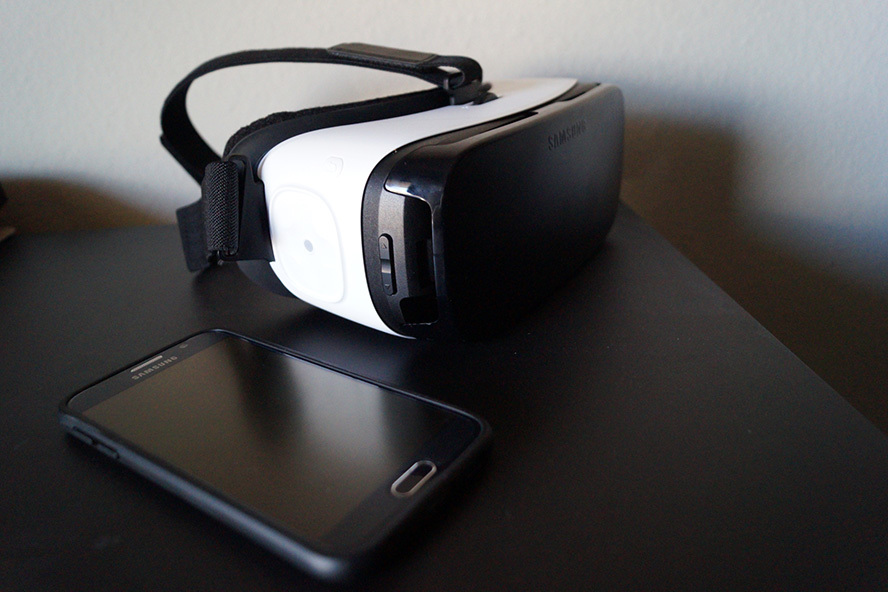
The Samsung Gear VR is the value choice among VR headsets. Being sold at only $99.99 and currently in stock, it's the most immediate and budget-friendly way to get into VR. Unlike the other headsets on this list, the Gear VR works with a Samsung smartphone, not a PC. It's a genius setup that makes use of the phone's camera and built-in accelerometers to do most of the heavy lifting. Unfortunately, that means the resolution of your VR experience will only be as good as the resolution of your phone's screen, which will always be smaller than a high-end PC model. You'll also have to supply your own headphones and an external controller if you don't want to use the touchpad on the side of the unit.
The software library of the Gear VR is decently large, if only because it's been around for a while. EVE: Gunjack is a pretty fun shooter, and Land's End is a like a virtual reality version of Myst, to get you started. You'll also find a variety of "VR Experiences" like Ocean Rift, which allows you to go virtual reality deep sea diving. The Gear VR is also a fantastic way to watch movies or TV shows, turning your phone into a VR movie theater. If you are getting into VR for media instead of games, then the Gear VR will save you a lot of money. It's also worth noting that the Gear VR is one hundred percent wireless because all the processing is done inside the phone, which is inside the set itself! Unfortunately, this also makes the Gear VR slightly heavier than some other headsets on this list.
The Gear VR is perfect for anyone who only wants to dip their toes into the VR pool. If you aren't sure if VR is for you, the Gear VR will give you a nice little taste of what VR can do with a minimal investment. In fact, I'd say purchasing a Gear VR is a no-brainer if you already have a compatible Samsung phone. Just don't expect it to pull the same weight these other headsets will.
The Merge VR Headset
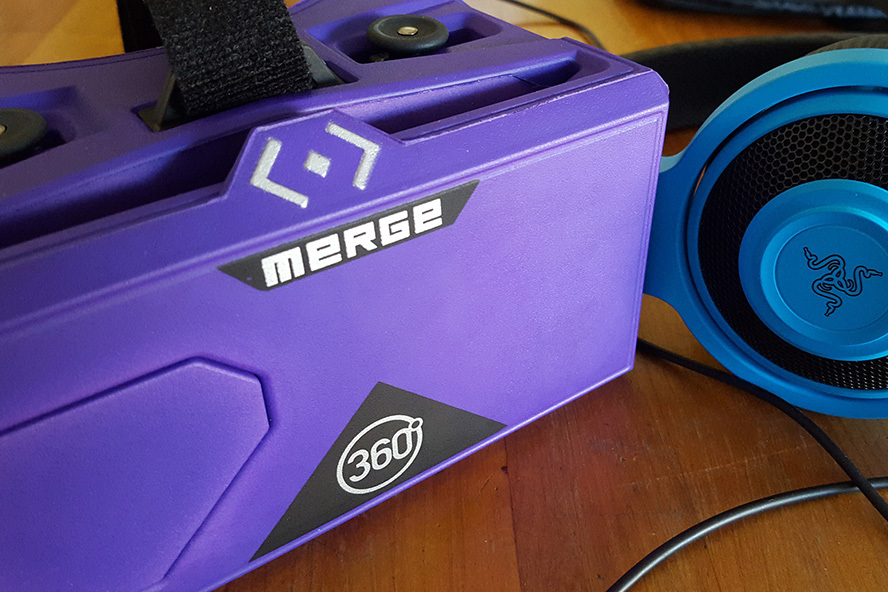
Merge VR is another starter VR headset made to work with smartphones. While the Gear VR is specifically built for Samsung phones, the Merge takes a variety of phones, from the iPhone 6 to the HTC One M8. It's built out of foam, and includes a camera slot for augmented reality functionality. Once again, your resolution and refresh rate will entirely depend on the phone you use, but it likely won't compare to the other headsets on this list. The Merge too can be purchased for $99, making it more of a competitor to the Gear than anything else.
The Merge has a decently large library filled with more of the aforementioned VR experiences rather than games. It can run a number of apps built specifically for it, as well as everything that was built for Google Cardboard. It's not quite as big as the Samsung Gear VR's library, but the average app for the Merge is also cheaper, costing a few dollars as opposed to Gear VR apps which can retail for up to $15. Notable apps include Cedar Point VR, which allows you to ride in virtual reality roller coasters, and YouVisit, which allows you to take virtual reality tours of the world.
If you don't have a Gear compatible phone and you don't want to spend a lot of money on a VR experience, then the Merge is the right headset for you. The Merge is also great for households that have users with a variety of different phone models, since it's compatible across a number of different brands. Just be careful as your phone can get very hot while in the Merge, and can lose about 25% battery for every hour of VR use.
The Razer OSVR Headset and Hacker Dev Kit
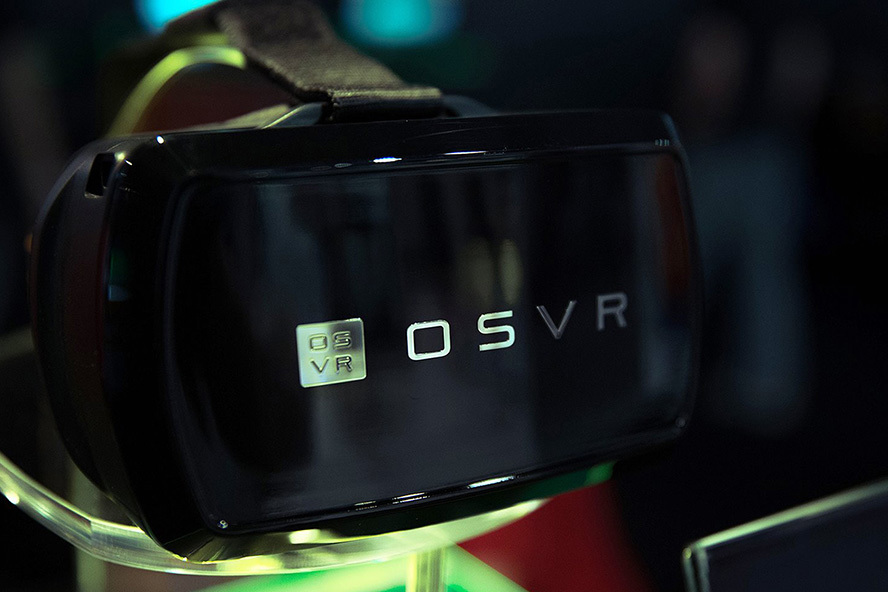
Finally we have the Razer OSVR, which is as much of a concept as it is a headset. Let me explain. OSVR stands for Open Source Virtual Reality. It's a project that is attempting to create a virtual reality platform that is hardware agnostic. In simpler terms, think about how Android can run on a variety of different smartphones, with a variety of different specs, made by a variety of different companies, yet you can still download the same apps on all of them and they (mostly) all work.
Look at all the VR headsets we have listed so far. Some have motion controllers. Some don't. Some run on smartphones. Some run on PCs. Some let you get up from your chair. Some track your head with lasers. Currently, developing for one headset usually means developing for that platform alone. But developing for OSVR could, potentially, mean developing games that can be used by any number of different VR devices. If OSVR becomes a standard, then the games you play on the PlayStation VR could be the same games you will play on the Oculus one day.
Similarly, the OSVR project is looking to create an affordable but easily modifiable headset that can play all the games on the OSVR platform. The OSVR Hacker Dev Kit retails at $300 and features a 1080P OLED screen with a 120HZ refresh rate, enough to compete with both the PlayStation VR and Oculus. It also has an IR faceplate, head tracker, accelerometers, and pretty much everything else you would expect. But everything is modular. You can swap out every part for something new and better if you want to and your apps will still work. Heck, there are even directions on Razer's website on how to build one from scratch. In fact, you have to have at least some experience with electronics to use this headset. Even if you order one new, some assembly will still be required.
The OSVR Hacker Dev Kit is made for the power-user and the game developer. While it's cheaper than other VR sets at only $300, it's no less powerful. It also works with much less powerful rigs with older graphics cards. But you aren't going to find a curated experience here. You are going to have to tinker with every individual app to get it to work. Its library mostly consists of games that you can play on other VR platforms, and that's kind of the point.
You might also pick up an OSVR for the future promise of some big name apps. For example, Ubisoft is throwing their support behind the project, and while they haven't officially noted what apps they will be developing, the name Assassin's Creed has been thrown around once or twice. castAR is a Kickstarted project which will allow you to play augmented reality board games, and it's compatible with the OSVR headset. That doesn't sound like much in terms of killer apps, but if there's nothing in the OSVR's library that appeals to you, you can always make your own. In fact, Razer kind of expects you to.
